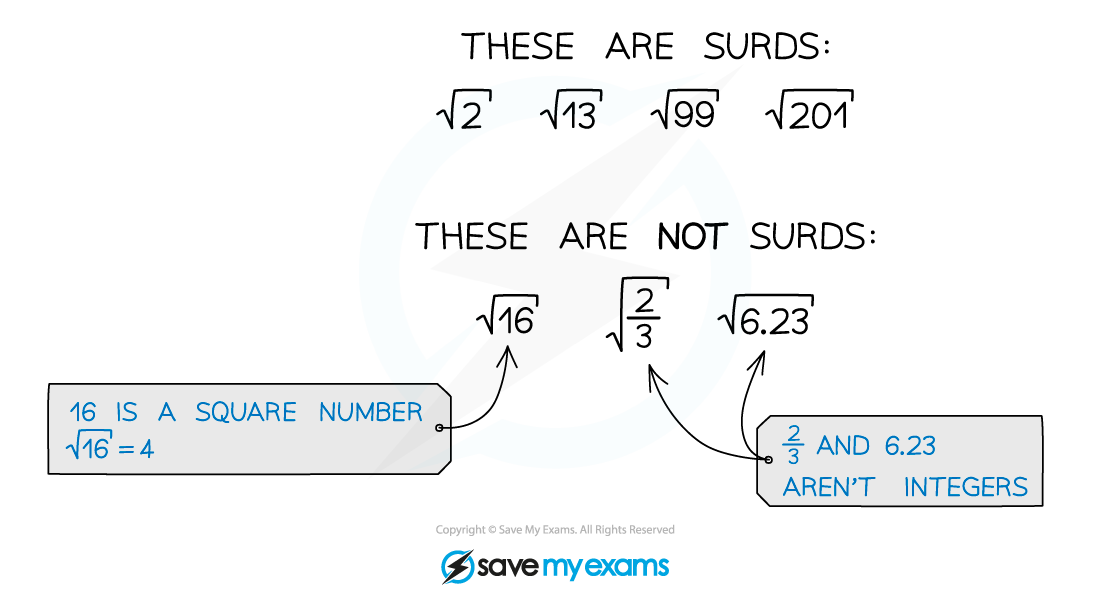Manipulating Surds (Edexcel International A Level (IAL) Maths): Revision Note
Exam code: YMA01
Did this video help you?
Manipulating surds
What are surds?
If n is a positive integer and is not a square number, then √n (or any multiple of √n ) is a surd

Surds are examples of irrational numbers
What do I need to know about manipulating surds?
There are two basic rules you need to know in order to manipulate and simplify surds:

When simplifying, look for square factors

You can collect like terms with surds like you do with letters in algebra:

But be careful not to confuse this with the multiplication and division rules... cannot add or subtract 'under the surd':

Where can surds be useful?
Using surds lets you leave answers in exact form
e.g.
rather than
Understanding how to simplify surds can help reduce expressions and collect like terms
Examiner Tips and Tricks
Leaving answers in surd form can be really helpful when you need to carry an exact value through to another part of working
When simplifying surds, remembering your square numbers is really helpful!
Worked Example


Unlock more, it's free!
Did this page help you?